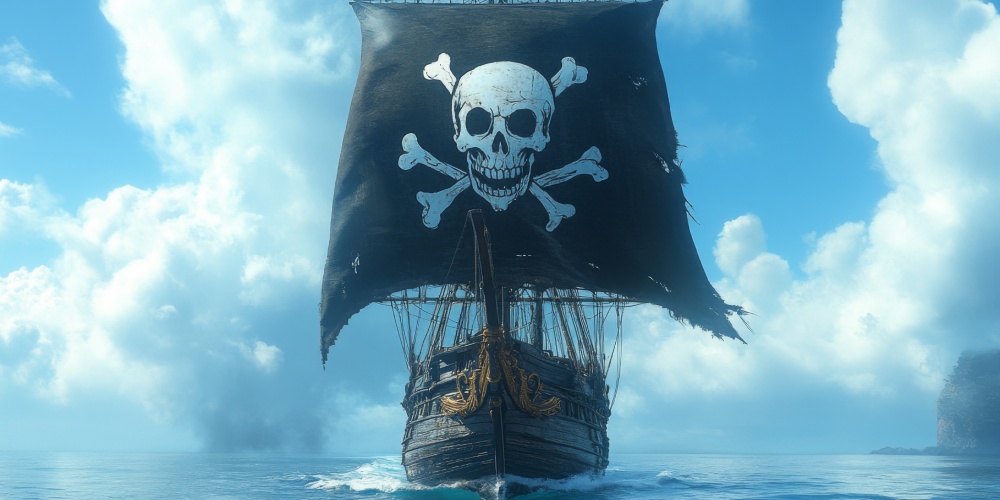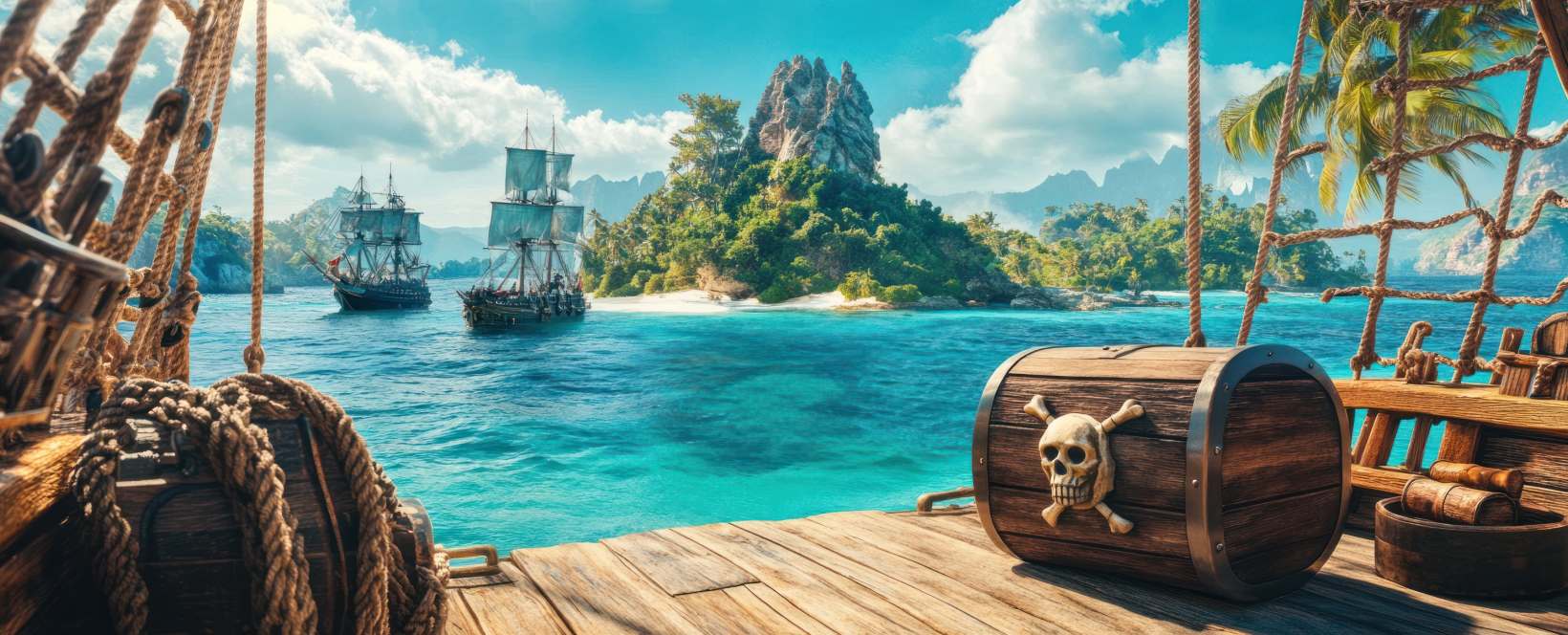
Maritime piracy: the original “get-rich-quick” scheme with swords, ships, and (mostly imaginary) treasure maps. While pop culture has painted pirates as charming rogues with parrots and panache, the real history of piracy is far more complex—and often much bloodier. From ancient sea raiders to modern speedboat hijackers, let’s dive into the salty tale of piracy through the ages.
1. What Was the Golden Age of Piracy?
The so-called Golden Age of Piracy spanned from the 1650s to the late 1720s, during which the high seas became a playground for cutthroats, outlaws, and disillusioned sailors with a fondness for rum and loot.
Historians typically break this swashbuckling era into three main chapters:
The Buccaneering Period (c. 1650–1680)
Anglo-French privateers (fancy term for government-approved pirates) launched attacks from Jamaica and Tortuga against Spanish treasure ships, proving that even in the 17th century, people didn’t like paying taxes to Spain.
The Pirate Round (1690s)
Pirates set sail from the Americas to the Indian Ocean, robbing wealthy Muslim merchants and East India Company ships. It was basically the 17th-century version of targeting billion-dollar tech companies—except with cannons.
The Post–Spanish Succession Surge (1716–1726)
After the war ended, thousands of unemployed sailors were left with nothing but experience in ship combat and no HR department. Naturally, many became pirates. This is when legends like Blackbeard, Calico Jack, and Anne Bonny made their mark—and their mugshots (well, woodcuts).

2. Why Did Piracy Flourish?
Let’s face it: if you’re a broke, underpaid sailor with no pension and a cutlass, piracy starts to sound like a pretty attractive side hustle. Several factors made this era ripe for plunder:
- Cargo ships were loaded with goodies — gold, spices, rum, and unfortunately, enslaved people.
- Naval protection was laughably bad in remote areas. If you saw a patrol ship, you were probably dreaming.
- Thousands of ex-naval men were out of work after European wars. What do you do with a ship full of bored guys with cannons? Apparently, piracy.
- Colonial governments were often too corrupt or too lazy to stop them—some even bought the stolen goods!
3. Pirate Life and Myth vs. Reality
Now, let’s debunk some of the more amusing pirate legends:
Forget buried treasure—it was more “spend it fast before you die of dysentery.” And while walking the plank makes for great theater, it was about as common as pirates using LinkedIn. Real punishments included being shot, hanged, or left on a tiny island with a bottle of rum and a bad attitude.
Yes, some pirates had parrots or peg legs, but they weren’t fashion statements. Parrots were exotic loot, and peg legs were... well, the result of sword fights and cannonballs.
Ironically, pirate ships were often more democratic than most societies on land. Crews voted on captains, divided spoils equally, and even had written codes of conduct. It was like an ocean-going startup with fewer pitch decks and more mutiny.
4. How Do We Know All This?
The 18th-century public loved a good pirate story. Newspapers milked tales of heists, sea battles, and hangings for all they were worth—basically the TMZ of the high seas.
One major source is Captain Charles Johnson’s 1724 bestseller A General History of the Robberies and Murders of the Most Notorious Pyrates. Was it accurate? Not always. Was it juicy? Absolutely. Half the reason we know names like Blackbeard today is thanks to this blend of tabloid journalism and salty gossip.
5. Why Did the Golden Age End?
Spoiler alert: the house always wins, and the sea eventually calls in its debts.
By the 1720s, pirate fun time was over. Here’s why:
- Navies got serious, sending warships after pirates like they owed them money (which they usually did).
- Mass hangings became the new normal, with entire crews executed to “set an example.” Spoiler: it worked.
- Governments offered pardons, basically saying, “We’ll pretend this never happened if you stop stealing things.”
- Ports were fortified, ships were better armed, and pirates had fewer safe havens.
The most notorious pirates were either hanged, shot, or went out in a blaze of glory (Blackbeard reportedly took five bullets and 20 sword cuts before he fell—talk about commitment).
6. Modern Piracy: Still a Thing
Think piracy ended with powdered wigs? Think again.
Modern piracy looks a little different—less rum, more AK-47s—but the core idea is the same: rob ships and hope you’re faster than the coast guard.
Current Hotspots:
- Somalia’s coast
- Strait of Malacca
- Gulf of Guinea
Some Caribbean waters (low-level stuff, not Jack Sparrow material)
Tactics Today:
- Speedboats instead of sloops
- Hostage-taking and ransom instead of buried chests
- GPS and radios instead of telescopes and parrots
Response:
- International naval patrols
- Armed guards on commercial ships
- Better protocols and tech (and, sadly, less cool fashion)
The Golden Age of Piracy wasn’t just an age of treasure maps and dramatic monologues. It was a wild, violent, and chaotic time born out of war, poverty, and opportunity. While the romantic image of pirates persists in pop culture, the reality was often darker—and a lot smellier.
Yet one thing is certain: as long as goods cross oceans, someone out there will try to take them.
So, next time you’re watching a pirate movie or humming a sea shanty, just remember: behind every “Arrr!” was probably a sailor with scurvy, back pain, and a grudge against the British Navy.